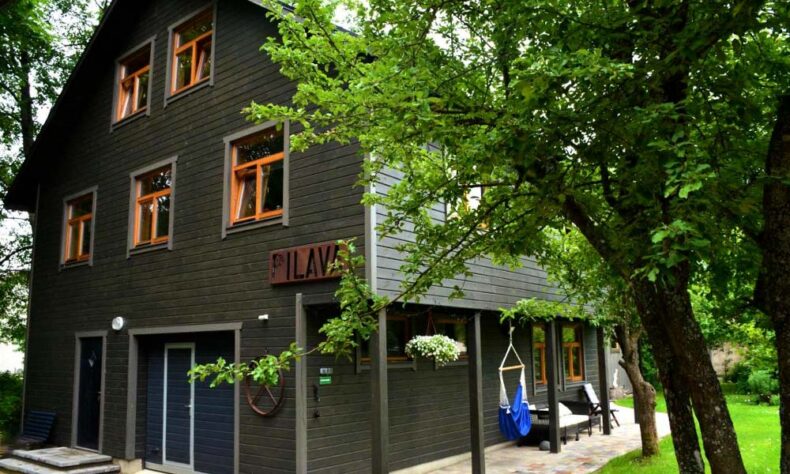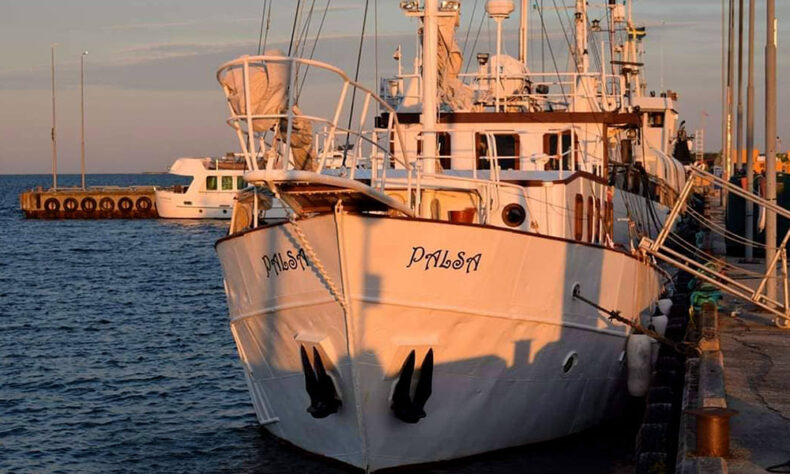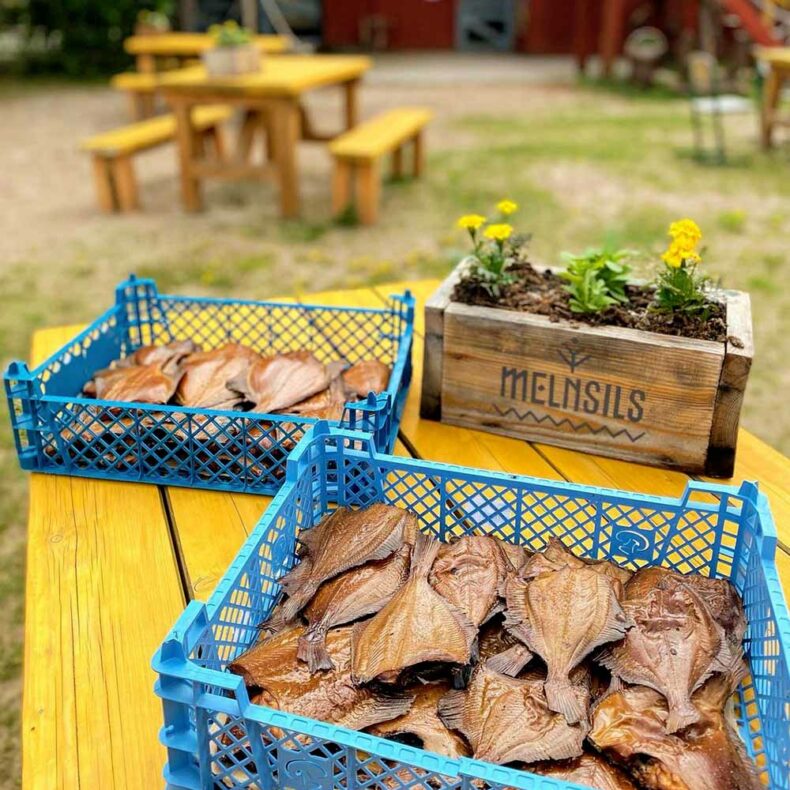Cape Kolka – one of the most beautiful treasures of Latvia.
Sandy beaches, untouched nature and rich local heritage to explore.
Take a hike or lay on the beach, taste local delicacies or listen to the legends of times long gone.
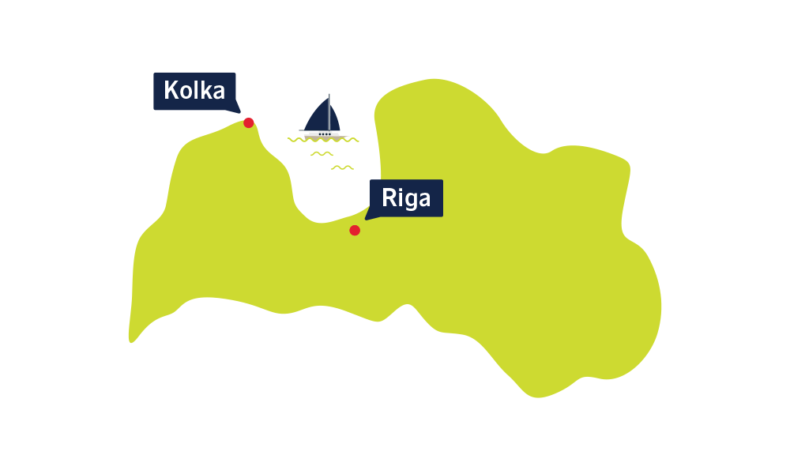
- The story of Kolka
- Cape Kolka
- It is said that the Livonians are like rocks
- The Livonian coast’s greatest treasure
- Where to stay
- Must-try local delicacies
- What to do
The story of Kolka has been neither quiet nor tranquil
The fisherman’s house called ‘Ūši’, stands at the older end of the village, closer to cape Kolka, and was first mentioned in the local church books in 1770.
As you leave the ‘Ūši’ homestead, there are two quite extraordinary buildings to right and its left, both full of history.
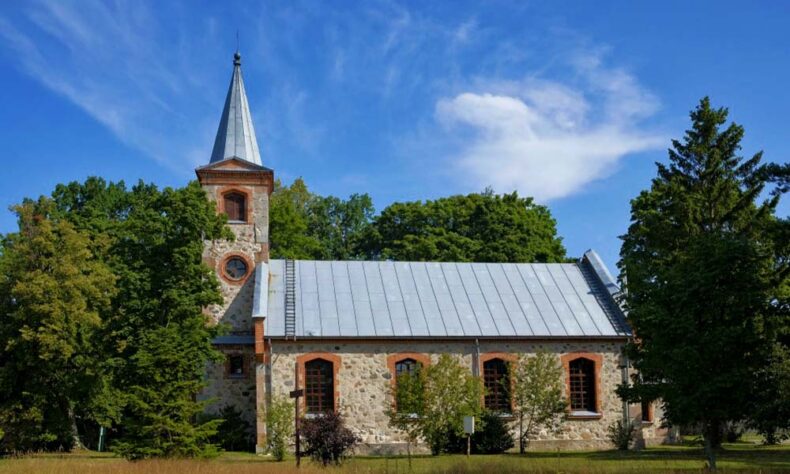
Photo on Redzēt
On the right is the Kolka Lutheran Church, dedicated in December of 1886. Like many churches throughout Latvia, it was vandalised during the Soviet era.
But in 1991, after Latvia regained independence, local residents and congregation members raised money to restore the church.
The church also has an unusual altarpiece, a modern triptych painted by Latvian artist Helēna Heinrihsone. It brings an accent of bright colour to the church’s otherwise modest interior.
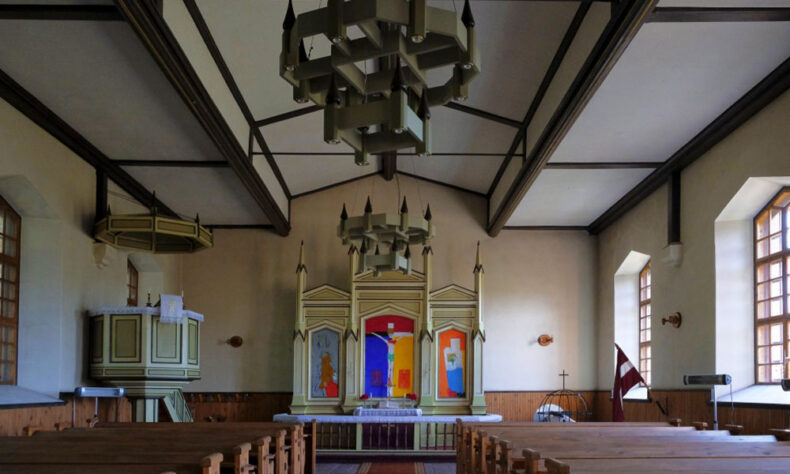
Photo on Redzēt
Just a five-minute walk from the Lutheran church, on the other side of the ‘Ūši’ driveway, the Orthodox Church of the Nativity in Kolka, dating to 1892, stands.
Kolka was the only coastal village in these parts where an Orthodox church was built.
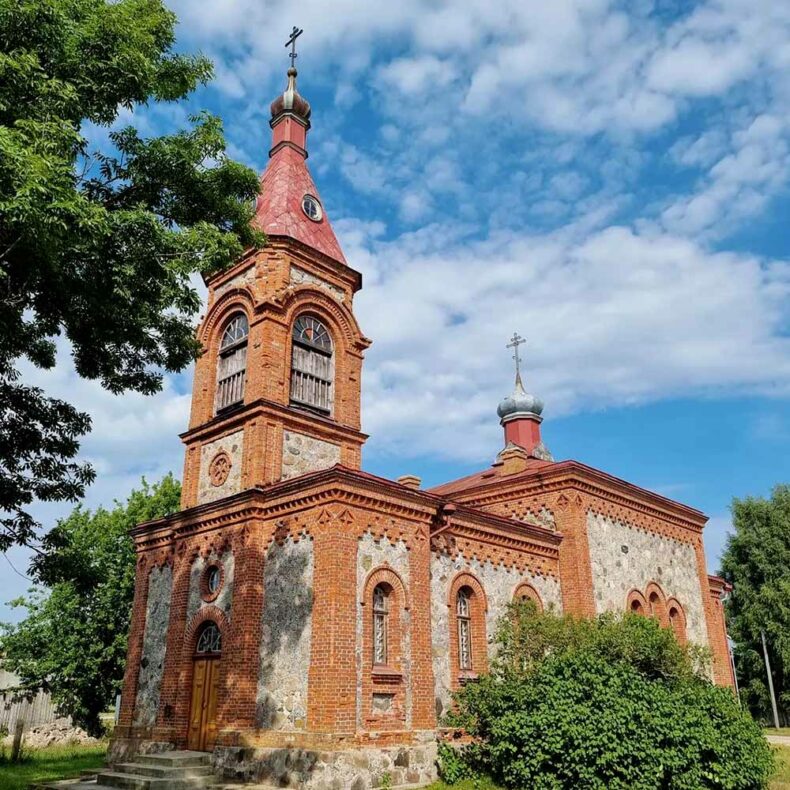
Photo on Instagram
Yet another story involves Kolka’s Roman Catholic congregation. In fact, it’s believed that the very first Christian church in Latvia may have been built right here in Kolka – more than 900 years ago.
However, this is still disputed by historians. In any case, the Catholic congregation was reestablished in Kolka 30 years ago but did not have a church of its own.
So the Kolkans decided that if they couldn’t build a church, at least they could move a church.
And so, in 1997 they moved the Grīņi Catholic Church (constructed in 1935) from Saka on Latvia’s western coast, deconstructing it log by log and then putting it back together again in Kolka.
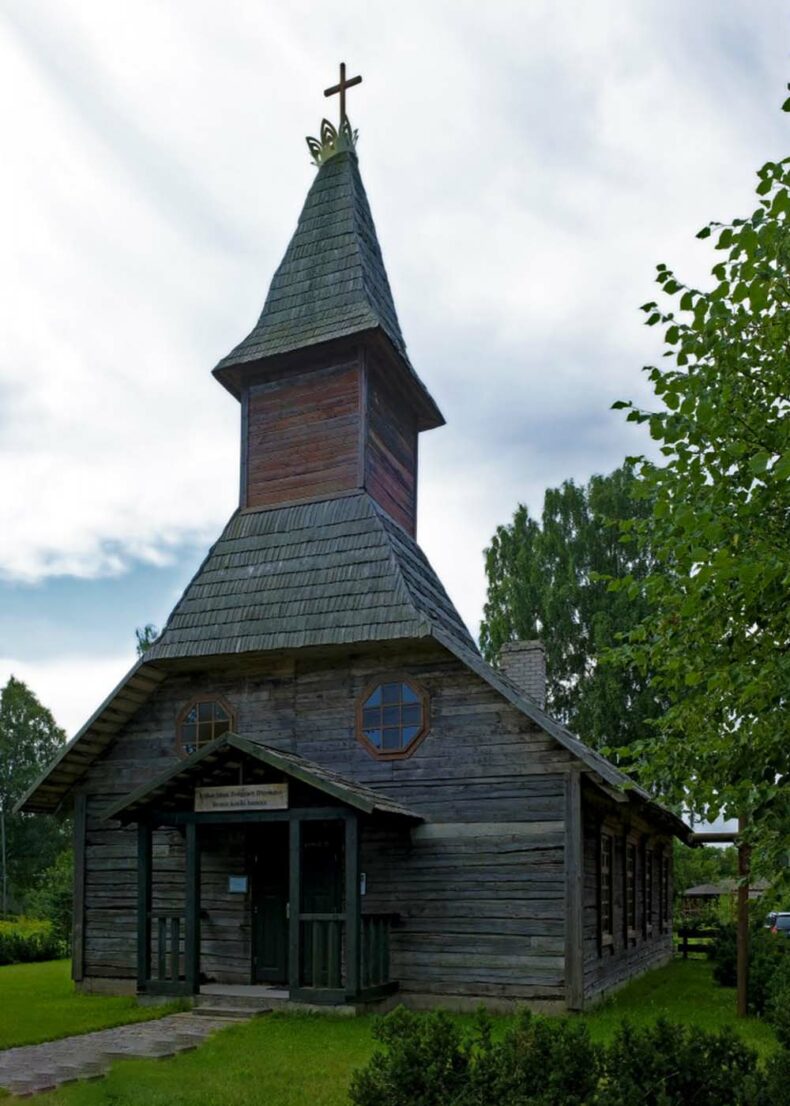
Photo on Redzēt
A small, unnamed road leads past the church to the sea. On the right side by the water stands Līcis-93, one of the largest fish processing facilities along the coast. It currently employs 240 people.
Fishing and fish processing has long been the main industry in Kolka. The first product was sprats salted in a spiced solution; they were called ‘Reval anchovies’, and sold all across Russia (Reval is the former name of Tallinn – Ed.).
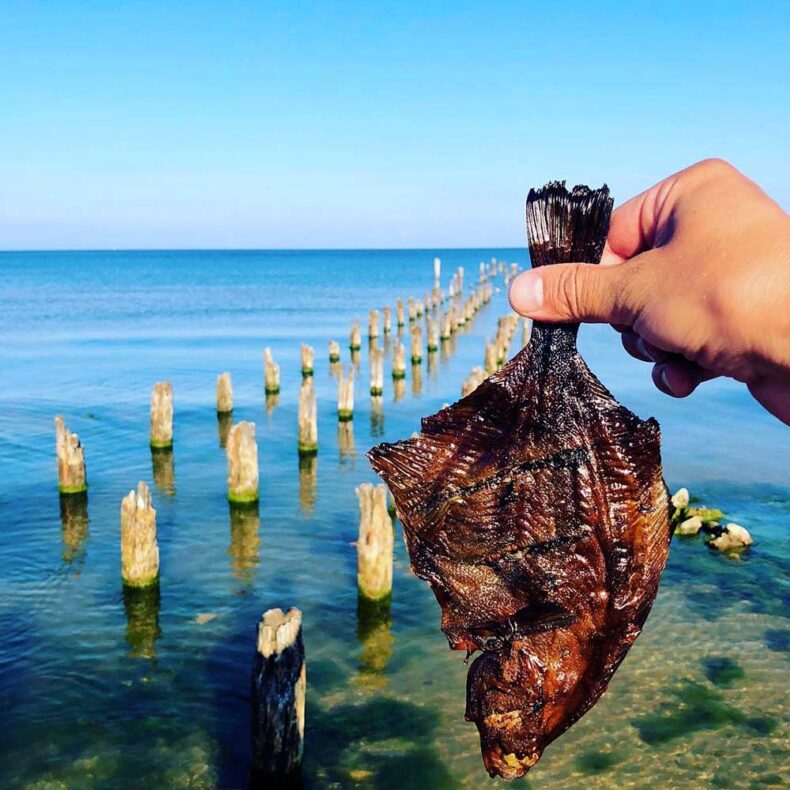
Photo on Instagram
This entire coast – from Nīca in southwest Latvia up to Kolka and down again to Mērsrags on the Gulf of Riga – was part of a special border zone of the Soviet Union.
Seeing as this was the extreme western border of the USSR, Soviet border guards constantly patrolled the coast, and the only civilians allowed in the zone were residents.
Any relatives wishing to visit required special permits. Cape Kolka was completely off limits.
After the Soviet army left the special zone, people could again visit Cape Kolka, as well as the entire coast. This was a big and emotionally significant event for Latvians, including the local residents.
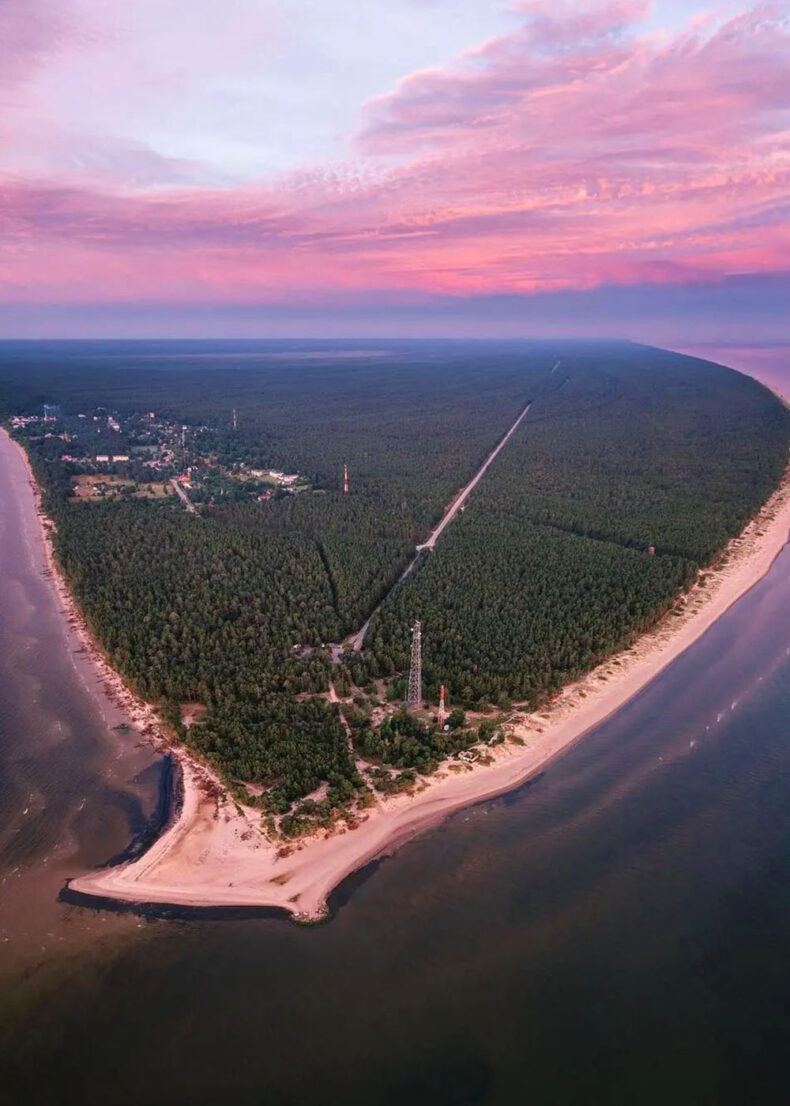
Photo on Instagram
Cape Kolka
There’s a special feeling at the cape on those early august mornings when I’ve been there. The air is motionless.
There might be a fishing vessel or two in the distance, but otherwise the water is usually smooth as a mirror.
That’s what tranquillity looks like.
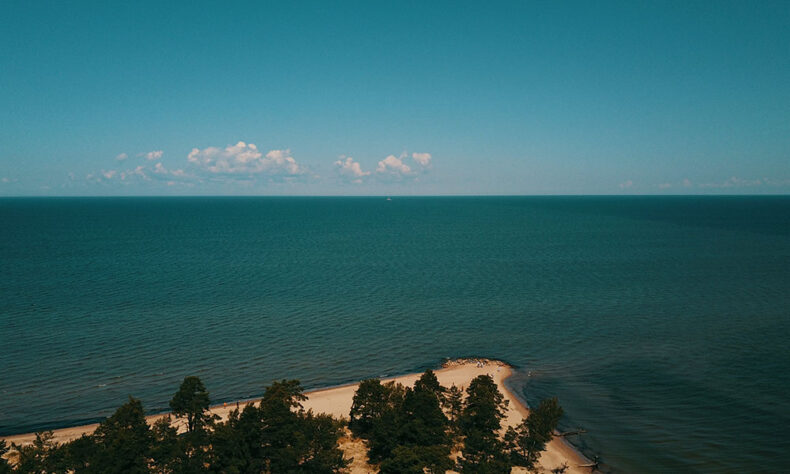
Photo on Unsplash
Even despite the advantages of modern technologies, Kolka Lighthouse still plays a vital role for ships.
In earlier times, bonfires were lit along the shore to warn sailors. A lighthouse at Kolka was first mentioned in historical documents in 1532. It was probably originally a wooden tower with a bonfire at the top.
Construction of an artificial island began in 1872 about six kilometres from the current shore. Local fishermen transported rocks to the site by boat – and on carts in winter, over the ice – to build the island.
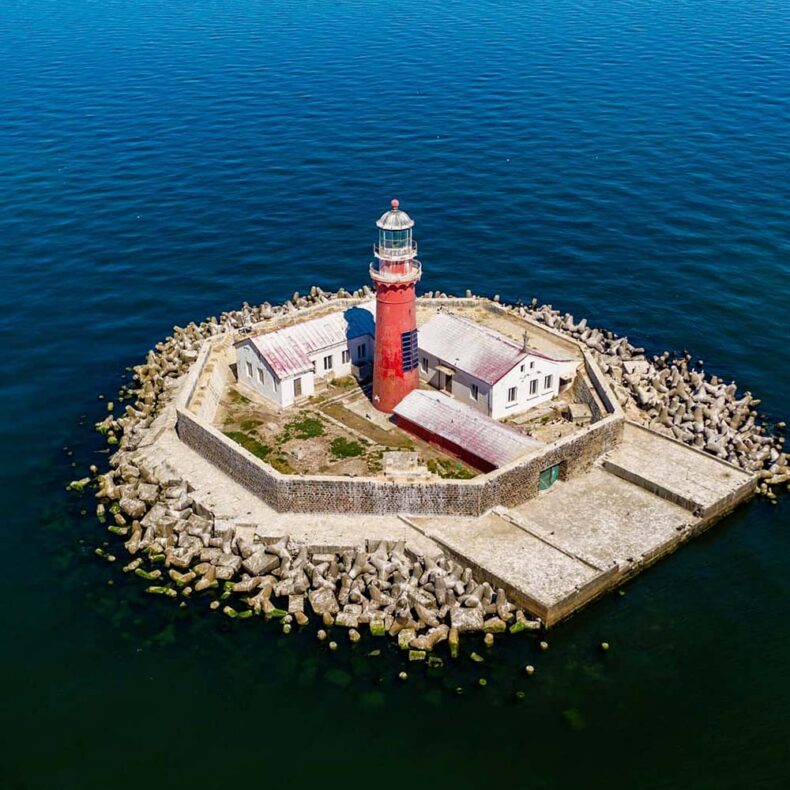
Photo on Instagram
The permanent lighthouse unveiled in 1884. The tower was built in Saint Petersburg and transported to Kolka by ship. In the past, however, employees lived on the artificial island for up to a month at a time.
In the winter, they arrived across the ice by horse-drawn wagon, bicycle, and even homemade ice yachts. But the last time the sea froze all the way to the lighthouse was a decade ago, in 2011.
It is said that the Livonians are like rocks under which water does not flow
They are tough people. It’s difficult to move them from where they stand or to convince them of anything. The ancestors of these people arrived in the area of present-day Latvia around the late Bronze Age.
The Livonian language has nevertheless left its mark on modern Latvian, for example, in the characteristic stress on the first syllable of all words.
But a story about northern Kurzeme without mentioning the Livonians would mean leaving out an important part of this area’s identity.
Unfortunately, the Livonian population dramatically decreased over the centuries. Today, it is estimated that only about 250 Livonians live in Latvia.
And yet the Livonians have survived and still cling to their culture, language, and traditions.
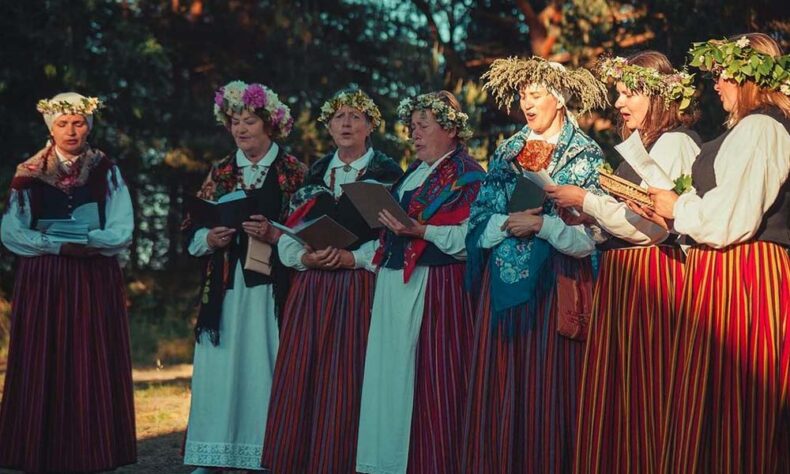
Photo on Instagram
Livonian photographer Jānis Mednis estimates that about 100 people in Latvia speak the Livonian language to some extent.
He himself has studied the language intensely for several years. Mednis speaks only in Livonian with his newborn daughter, Kuldi.
A Livonian textbook for children, titled Kūldaläpš (meaning ‘golden child’), will soon be published as well.
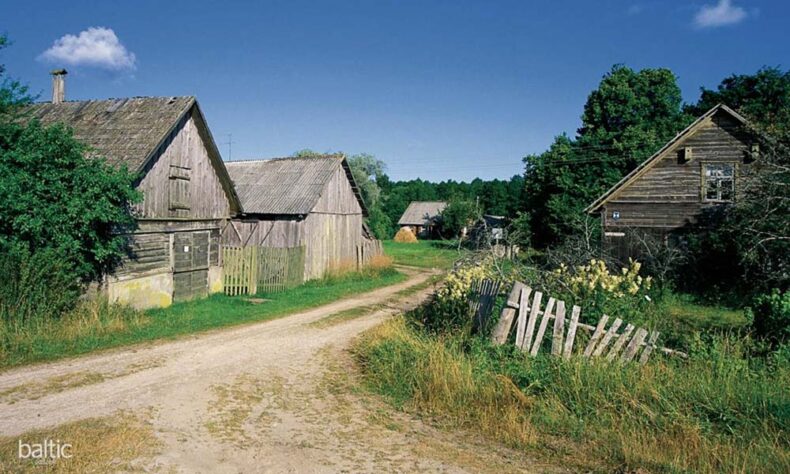
The first Livonian school, which operated in the mid-19th century, was located in Košrags. Nearby Sīkrags, one of the oldest Livonian settlements, is also a national cultural monument.
‘Our character tends to be unbending, even stubborn,’ Mednis says.
‘A Livonian is quite likely a reserved type of person, but at the same time much more impulsive and temperamental than the typical Latvian. And in harmony with nature. Kind of a loner. Feels best on his own homestead by the sea.’
And it’s this pristine natural environment that’s possibly the Livonian coast’s greatest treasure
The sea of green forest here is immense and also includes Slītere National Park (SNP).
This is the smallest of Latvia’s four national parks, and, thanks to the former closed border zone, its history also differs significantly.
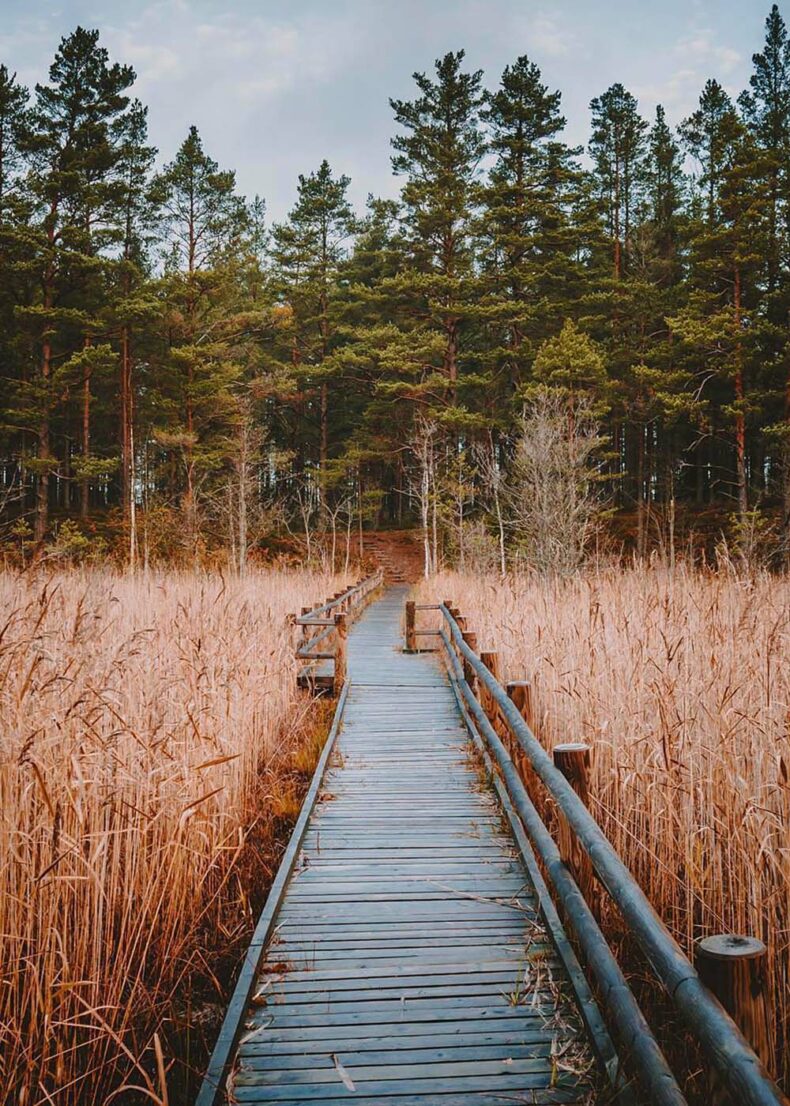
Photo on Instagram
Today, the park encompasses more than 16,000 hectares. Today it’s usually the unusual orchids and rare, protected insects and mosses that specialists from around the world come here to study.
SNP has also been referred to as the open-air museum of the formation of the Baltic Sea. This sea is geologically very young, having formed only after the most recent ice age.
The Blue Hills at Šlītere are in fact the ancient shore of the Baltic Ice Lake – the oldest stage of the Baltic Sea.
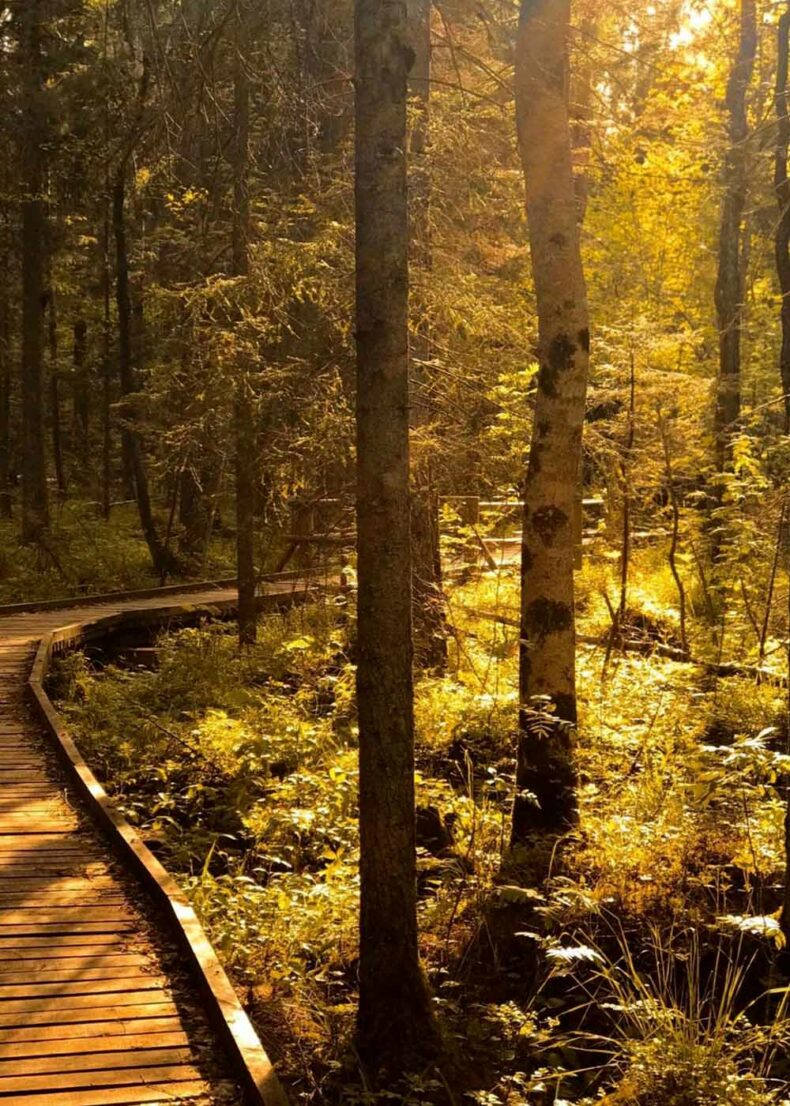
Photo on Instagram
Driving from Kolka to Dundaga, you’ll notice this wavy terrain quite easily. In fact, the landscape is similar along the whole coast from Roja to Ventspils, not just in the park.
SNP was located within the Soviet Union’s closed border zone. The Iron Curtain that divided eastern and western Europe was more than 12,000 kilometres long.
In some places it was physically visible, as in the case of the Berlin Wall, but in other places, such as here, it was simply an area with very limited human activity.
Park visitors are welcome to explore this unique area on the nature trails.
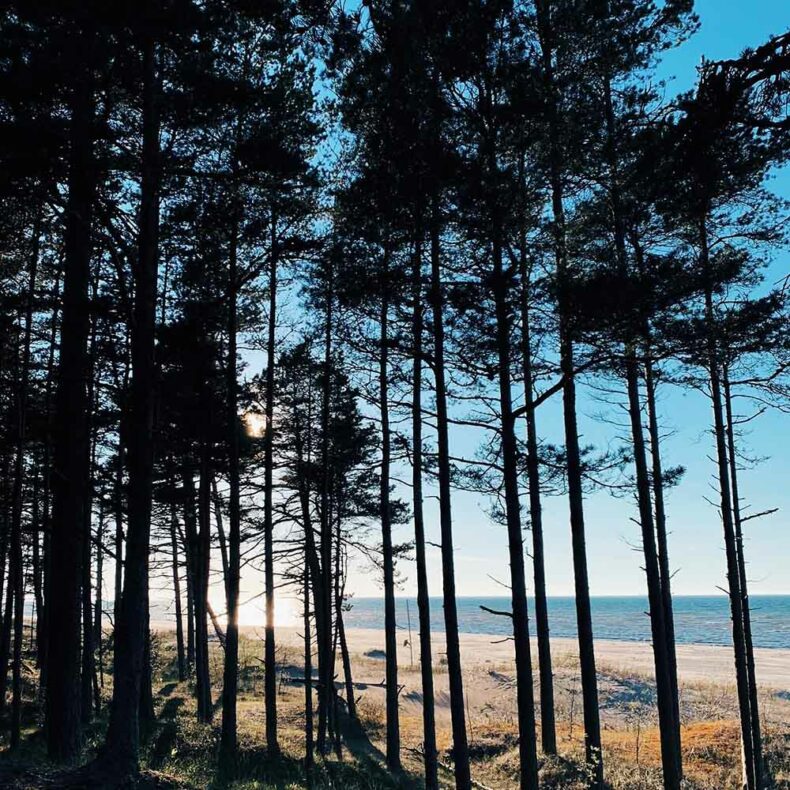
Photo on Instagram
But Cape Kolka and the surrounding area is a significant migratory route for birds; in spring, one can sometimes witness several thousand birds flying past in a single hour.
That said, the best time to come to Kolka for some bird-watching is in April and May as well as September and October.
When spending time in nature, remember to ‘pack it in, pack it out’. In other words, leave no trace.
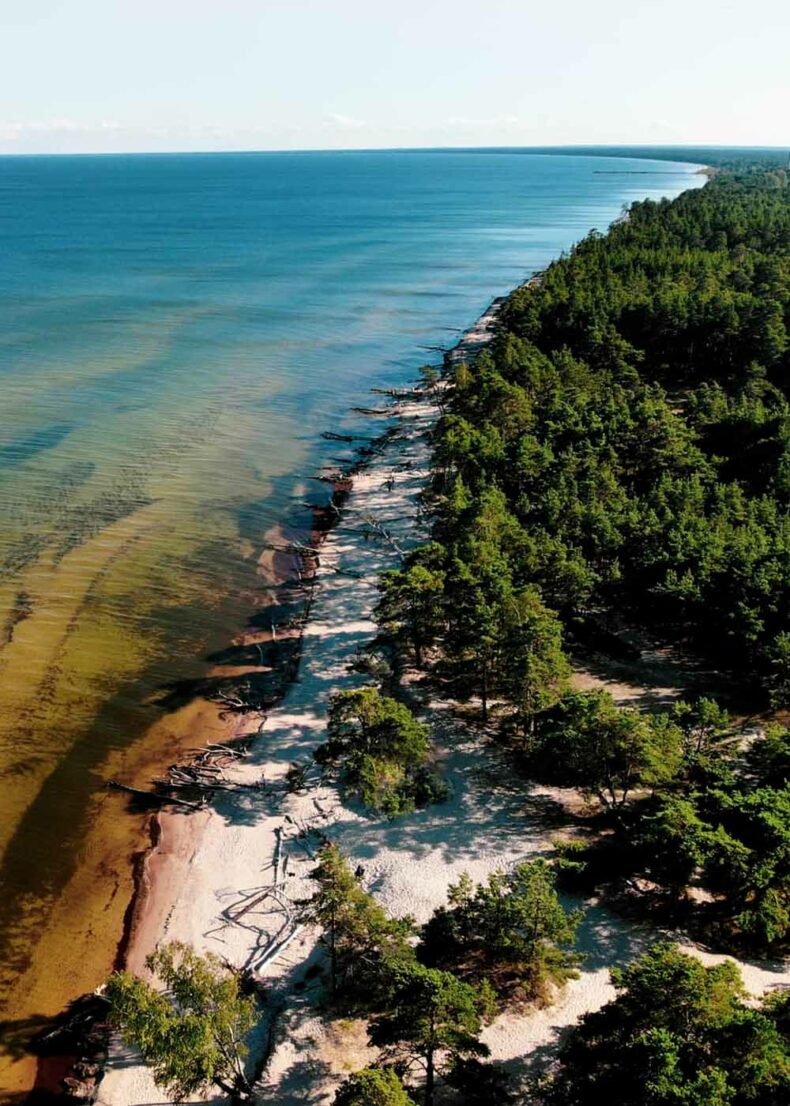
Photo on Instagram
Not only do people influence nature, but nature itself is constantly changing. This includes Cape Kolka.
According to Jānis Lapinskis, a geologist and lecturer at the Department of Geography and Earth Sciences of the University of Latvia, the sea has washed away about 130 metres of land from both sides of Cape Kolka over the past 130 years. Now the shore has receded on both sides of the cape.
But Šlītere Lighthouse has remained standing since it was built in 1849 on the ancient banks of the Baltic Ice Lake. The lighthouse stands on an advantageous site, naturally higher than the surrounding area at 70 metres above sea level.
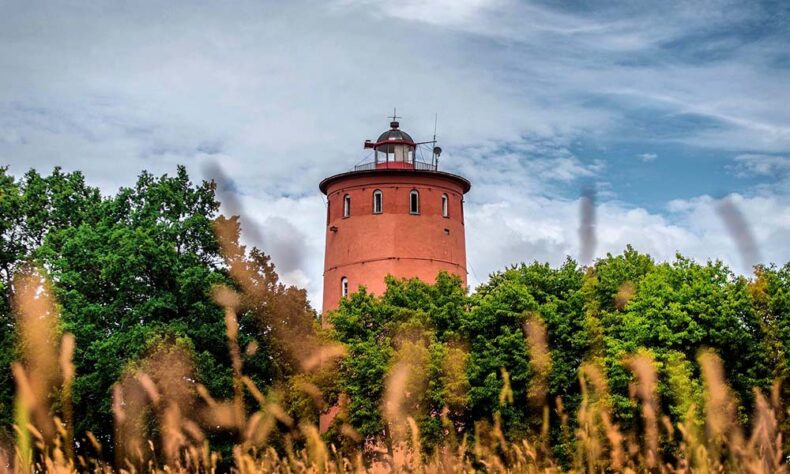
Photo on Instagram
So it’s no surprise that it can even be seen from Sorve Lighthouse in Estonia. It has also served well as a lookout tower for forest fires.
Today, Šlītere Lighthouse is no longer used for navigation purposes, but it is open to the public from mid-April until October.
Climb to the top of the lighthouse and see the vast sea of green forest turn to blue in the distance.
In summer, the corn crakes rasp. In autumn, the cranes call.
And right now, as I stand next to Šlītere Lighthouse and gaze at the sea beyond the tops of the trees, I long for my August mornings again, although this place is magical at every time of the year.
Where to stay
Pilava guest house
Photo on Booking
Pilava stands out not only in terms of design, but also with its environmentally friendly and sustainable approach.
The guest house was built using only eco-friendly building materials as well as natural paints and varnishes, and the main power source here is solar panels, which also help to create a favourable microclimate and promote healthy sleep. Pilava is located only 20 metres from the seashore.
Palsa yacht
Photo on Instagram
Gundega and Lauris Karlsons offer cruises and overnights on the Palsa.
Lauris is also the captain of the yacht, and the inspiring story of how he fulfilled his dream can be read on their website.
Originally a fishing vessel, Palsa has been reconstructed as a leisure ship. The former fish hold now serves as living quarters with five comfortable cabins and portholes offering exhilarating views of the foaming waves.
Must-try local delicacies
Sklandrauši
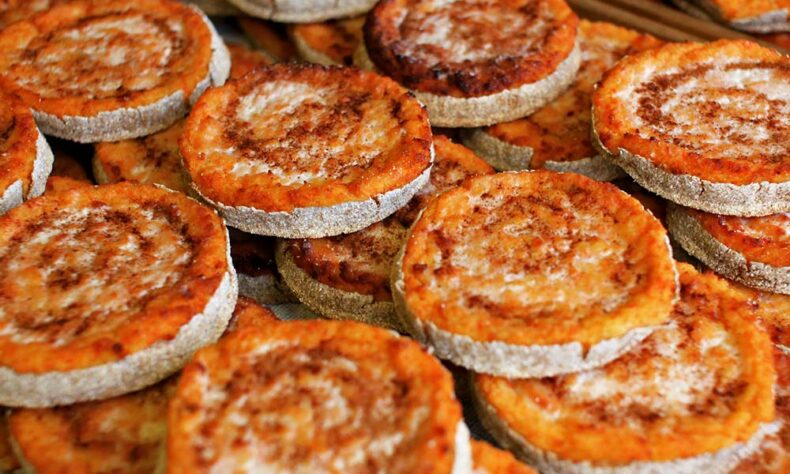
Photo on Ražots Kurzemē
Consisting of an unleavened rye crust with a hearty carrotand- potato filling and garnish of caraway seeds, these small pies have been granted the Traditional Speciality Guaranteed (TSG) designation by the European Commission.
In Kolka, get the best sklandrauši in summertime from Jānis Tarlaps at the ‘Zvīņas’ homestead across from the Kolka stadium or from Dženeta Marinska at ‘Ūši’.
Smoked fish
Photo on Instagram
Although not specifically a Livonian delicacy (smoked fish can be found all along the Baltic coast and in many other countries as well), a trip to Kolka without trying some smoked fish wouldn’t be a real trip to Kolka.
Buy the fish at small wooden huts along the roadsides. They’re all locally sourced and smoked at home.
For a restaurant meal, we recommend Dzintarkrasts in Žocene (near Roja) or Otra puse (Jūras iela 6/8, Roja).
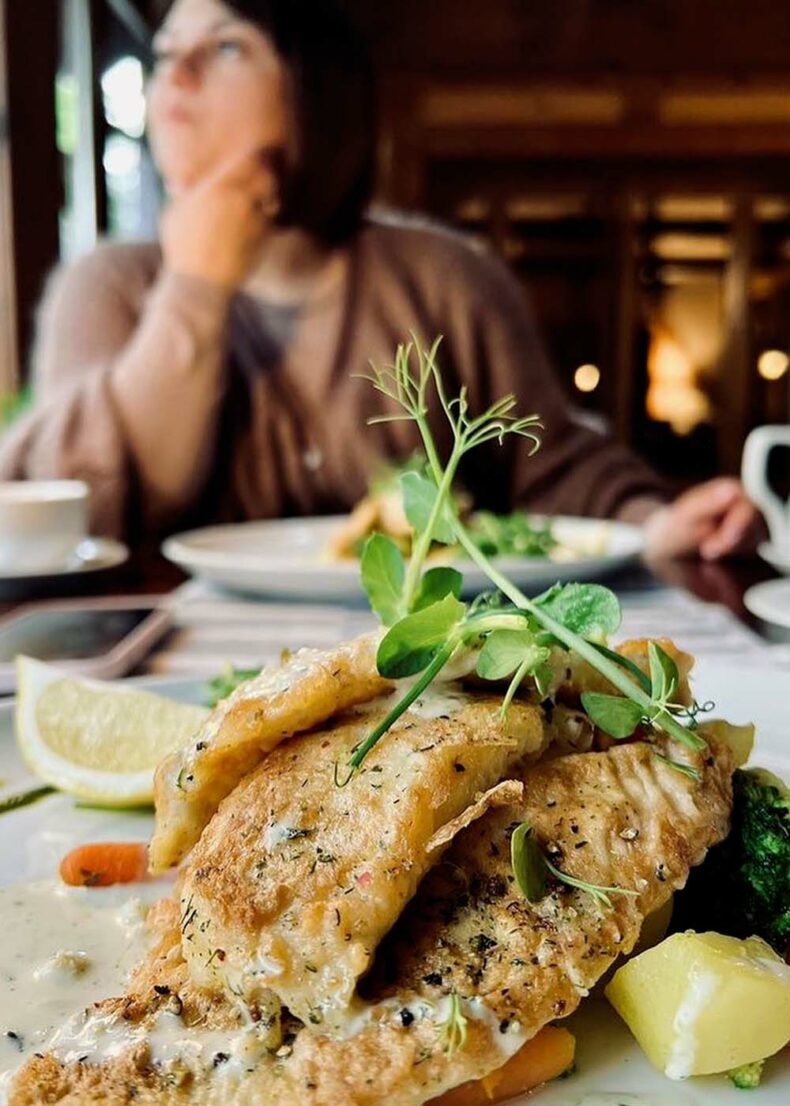
Photo on Instagram
What to do
Slītere National Park with Vilnis Skuja
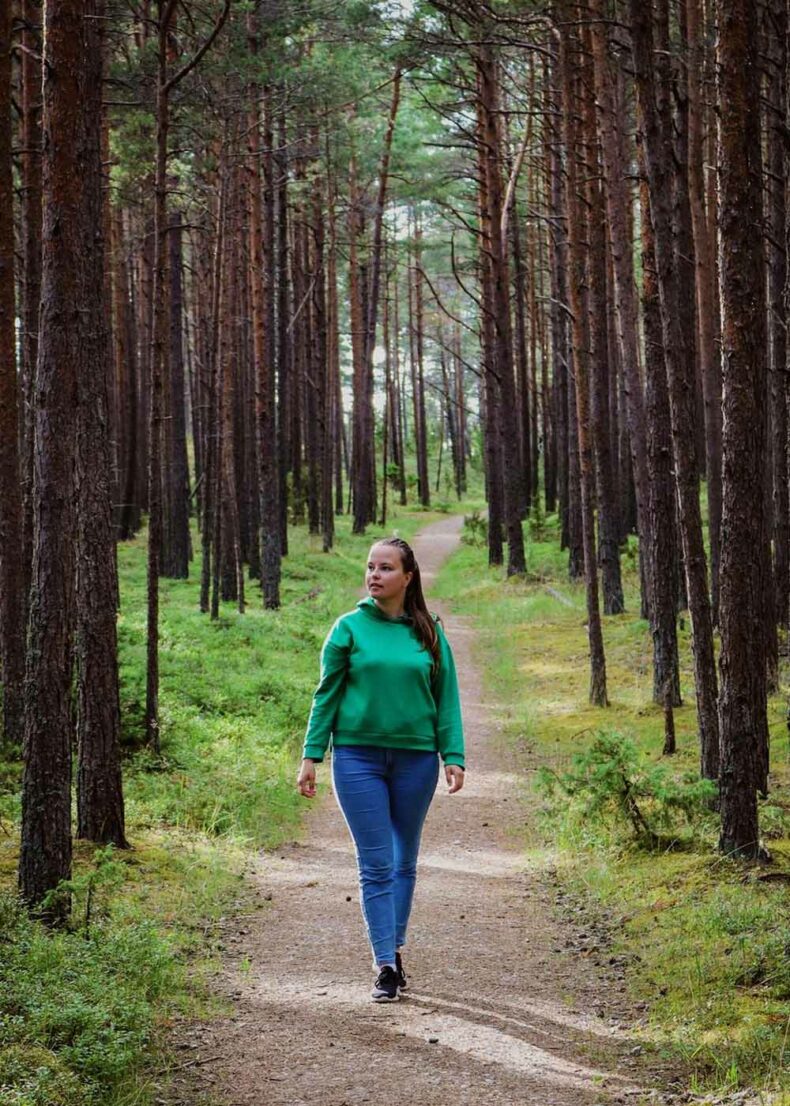
Photo on Instagram
Vilnis Skuja, one of the most experienced nature specialists in Latvia, leads hikes through Slītere National Park.
If you’re particularly interested in birdwatching, check out downloadable brochure. The Kolka Pine Trail features a 16-metre-high birdwatching tower.
Twitter: @Skuja.Vilnis E-mail: vilnis.skuja@daba.gov.lv
Explore Mazirbe
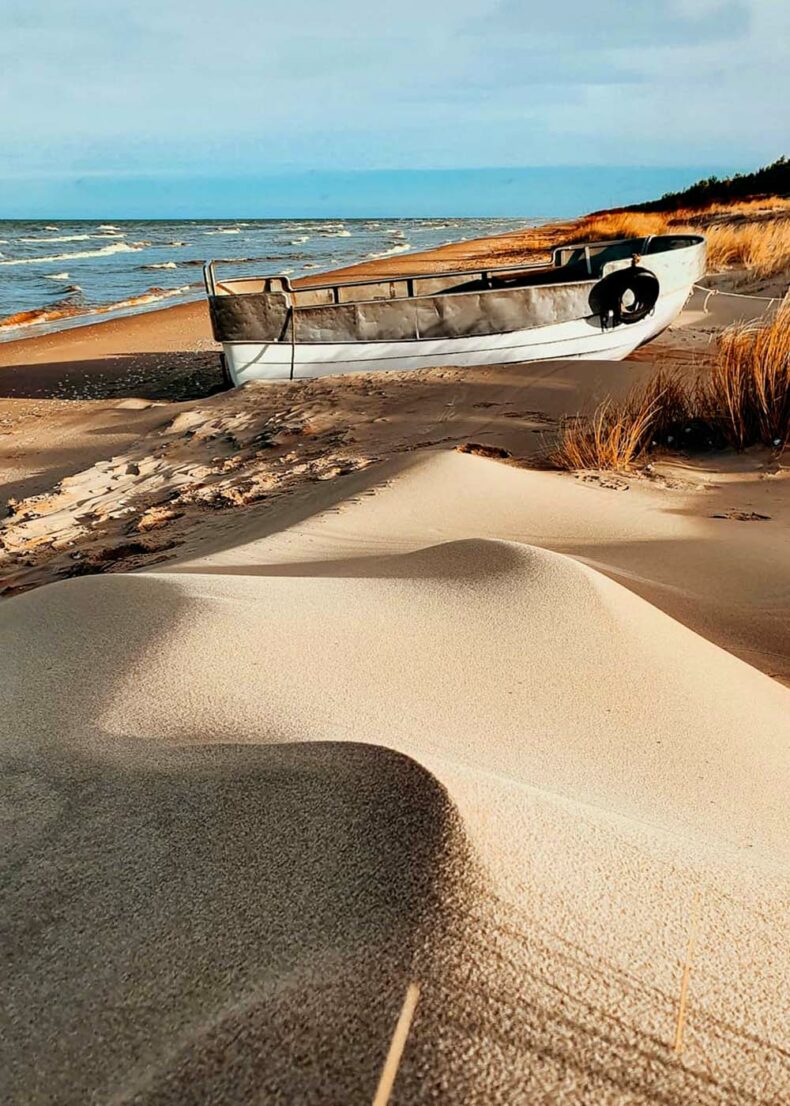
Photo on Instagram
Up until the middle of the 20th century, this town was home to the largest settlement of Livonians.
Construction of sailboats began here in 1860.
A nature trail leads along the former route of the narrowgauge (660 mm) railway that connected Dundaga and the coastal villages with the larger towns of Ventspils and Talsi between 1916 and 1962.
Along the trail, which is open to hikers and bicyclists, you’ll see the site of Mazirbe Station, marked today by a commemorative stone.
The small loop is 15 kilometres long, and the long loop is 19 kilometres long.
See the remains of old fishing boats at the Mazirbe boat cemetery.
More about Kolka read in Baltic Outlook.
